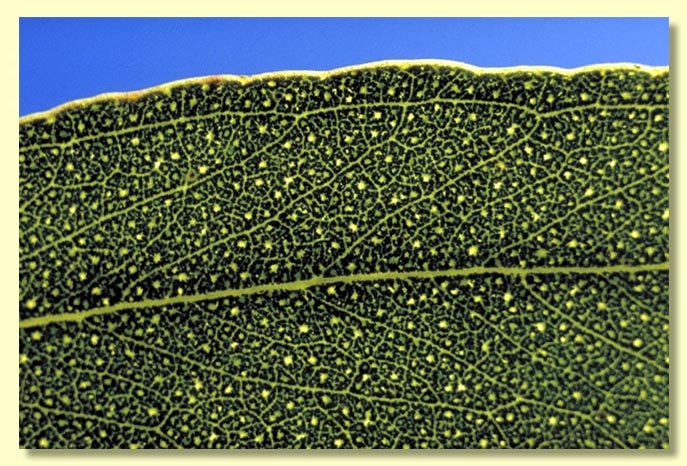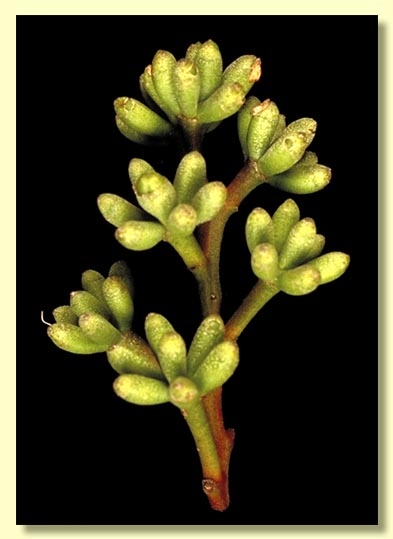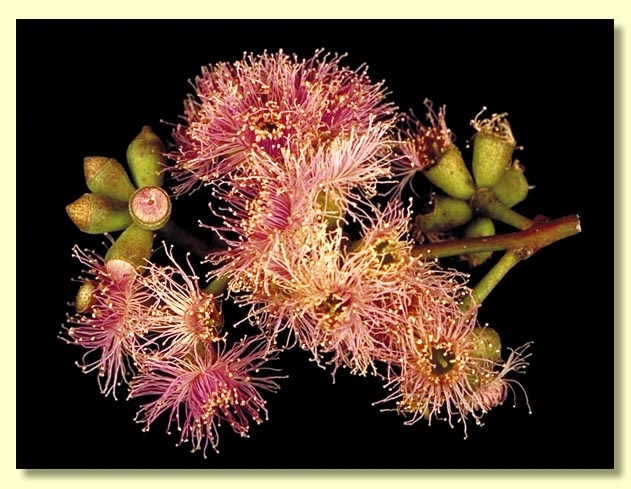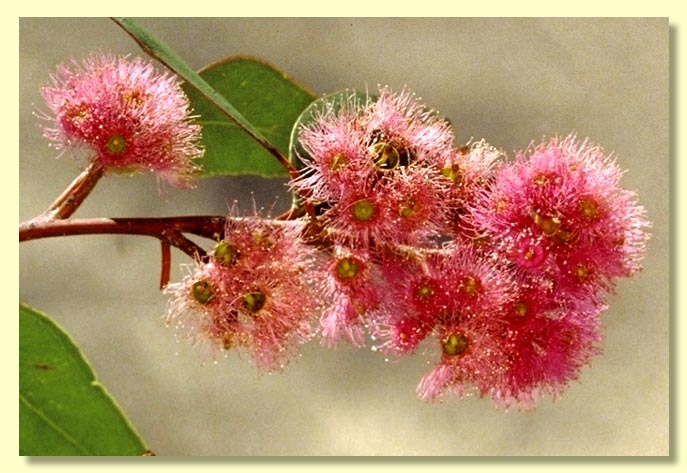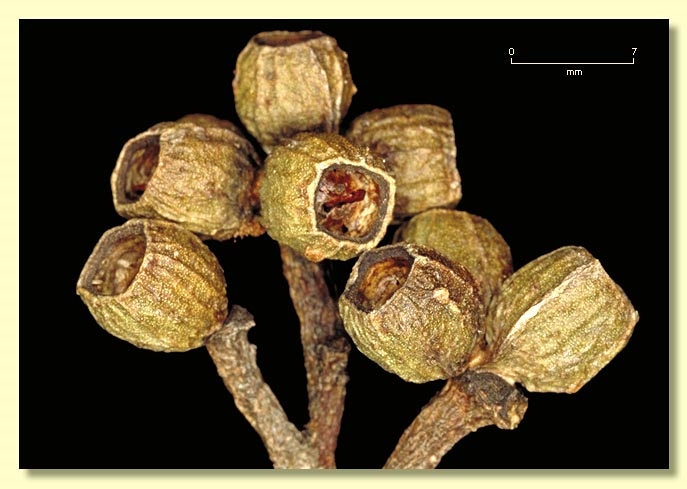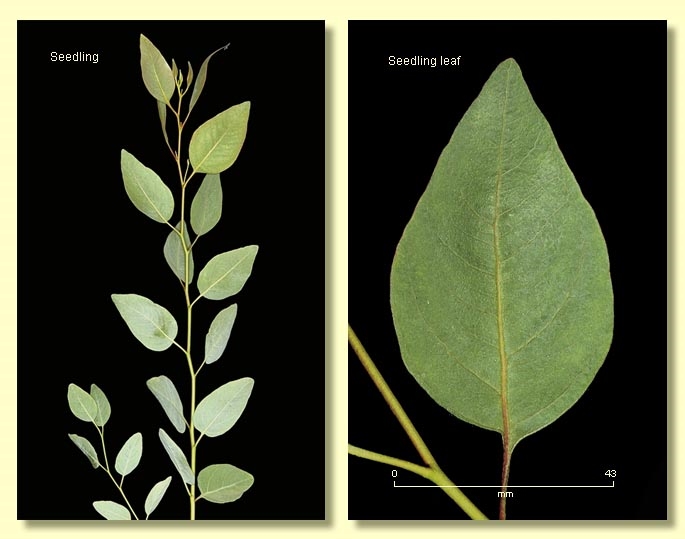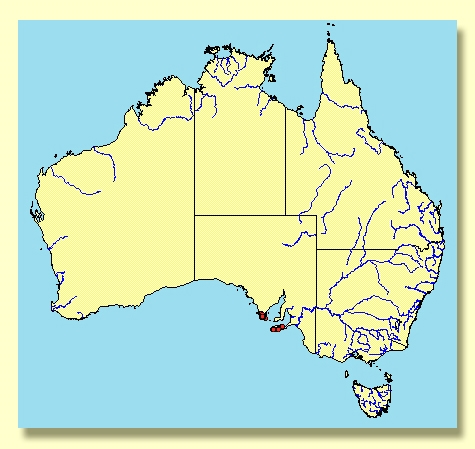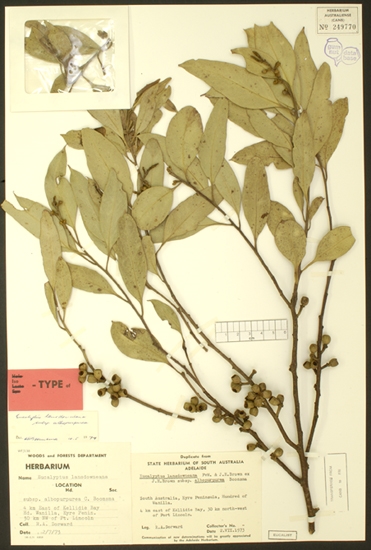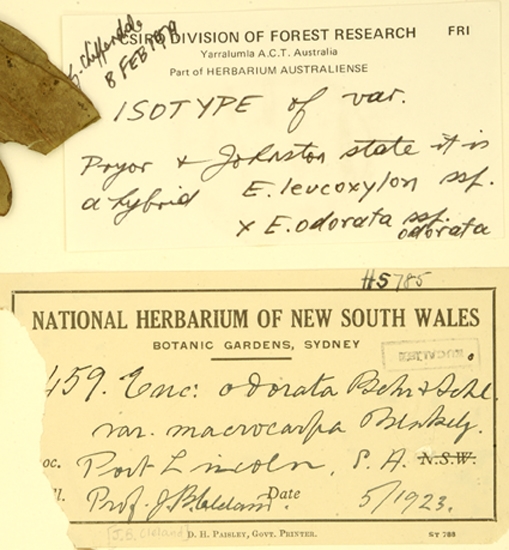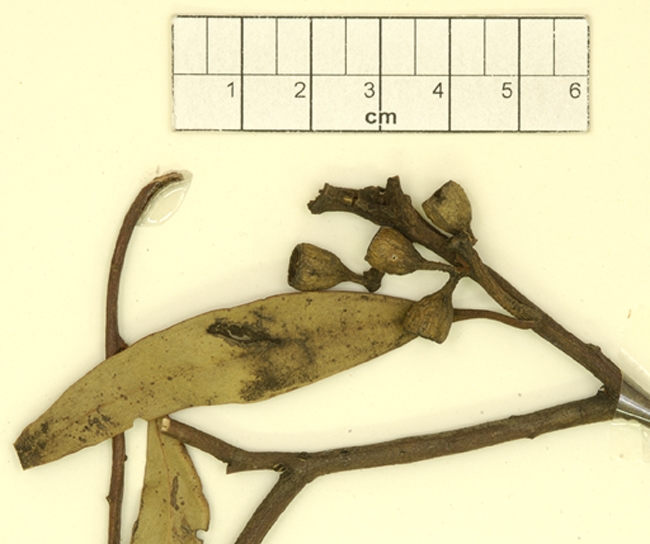Euclid - Online edition
Eucalyptus albopurpurea
Eucalyptus | Symphyomyrtus | Adnataria | Apicales | Buxeales | Continentes
Eucalyptus lansdowneana var. leucantha Blakely, Key Eucalypts 224 (1934). T: between Kirton Point & Port Lincoln, S.A., Jan. 1907, J.H.Maiden s.n.; holo: NSW.
Bark rough on part or most of stems, fibrous to box-type, grey to grey-brown, or smooth throughout, grey to pink-grey or coppery brown, the crown sometimes ribbony.
Branchlets with or without oil glands in the pith, if present restricted to the nodes.
Juvenile growth (coppice or wild seedling to 50 cm tall): stems rounded to square in cross-section, smooth or slightly warty; juvenile leaves always petiolate, opposite for 3 to 6 pairs then alternate, ovate to broadly lanceolate, 4–11cm long, 2.3–4.7 cm wide, base tapering to petiole, apex pointed or rounded, concolorous, lower leaves dull, blue-green, later leaves glossy, dark green.
Adult leaves alternate, petiole 1–2 cm long; blade lanceolate, 7–14 cm long, 1.2–3 cm wide, base tapering to petiole, concolorous, glossy, dark green, side veins acute, moderately to densely reticulate with erose veinlets, intramarginal vein parallel to and remote from margin, oil glands few, intersectional, or absent.
Inflorescence terminal compound and sometimes with single umbels in subterminal axils also, peduncles 0.7–2 cm long, buds 7, 9 or 11 per umbel, sessile or with pedicels to 0.4 cm long. Mature buds clavate to oblong to ovoid, 0.6–1 cm long, 0.3–0.4 cm wide, green to brown, smooth, without longitudinal ridges, scar absent (both inner and outer opercula held until flowering), operculum conical to rounded, stamens inflexed or irregularly flexed, anthers adnate, oblong or globoid, dehiscing by lateral pores, style long, stigma blunt or pin-head shaped, locules 4 or 5 each with 4 vertical ovule rows. Flowers white, pink, mauve or purple.
Fruit sessile or with pedicels to 0.4 cm long, sub-cylindrical, cup-shaped or barrel-shaped, 0.6–1 cm long, 0.5–0.8 cm wide, disc descending, valves 4 or 5, enclosed.
Seeds brown or grey, 0.7–1.5 mm long, ovoid or flattened-ovoid, dorsal surface with shallow reticulum, hilum ventral.
Cultivated seedlings (measured at node 10): cotyledons reniform to ±oblong; stems rounded to square in cross-section, sometimes slightly warty; leaves always petiolate, opposite for 3 to 6 nodes then alternate, broadly ovate, 4–8.5 cm long, 2–5 cm long, base truncate to rounded or tapering, dull, grey-green, sometimes slightly glaucous.
Flowering has been recorded in all months except November.
A mallee endemic to South Australia, found only on the southern tip of the Eyre Peninsula and on Kangaroo Island, on coastal sands. It has partly rough-barked stems and glossy green adult leaves. Flowers vary in colour from white to pale pink and shades of mauve. Within its natural range Eucalyptus albopurpurea is unlikely to be confused with any other species because of its terminal inflorescences, often colourful flowers and broad juvenile leaves of coppice growth.
Formerly known under the name of E. lansdowneana subsp. albopurpurea but now considered to be not that closely related to E. lansdowneana (a red-flowered box species from the Gawler Ranges). Buds and fruit of E. lansdowneana are slightly larger than those of E. albopurpurea. E. lansdowneana also has flowers with the outer stamens sterile (staminodes).
E. albopurpurea belongs in Eucalyptus subgenus Symphyomyrtus section Adnataria (the boxes) because the buds have two opercula, ovules are in four rows, seeds are flattened-ovoid, cotyledons are reniform, and anthers are rigid on the staminal filaments. Within section Adnataria, E. albopurpurea is part of a subgroup, series Buxeales subseries Continentes, further distinguished by having buds that retain the outer operculum until flowering time, when both opercula are shed together. Most species in this group are from eastern Australia and have all stamens fertile and are woodland trees of hills and plains, often dominant in the landscape, viz. E. albens, E. moluccana, E. microcarpa and E. pilligaensis. Others, viz. E. viridis, E. polybractea, E. froggattii, E. odorata, E. albopurpurea, E. sp. Flinders Ranges and E. porosa, are mallees, some of them also occurring as small trees occasionally. The geographic range of E. albopurpurea doesn't overlap with any of these species except E. odorata which manifestly differs in having narrow juvenile and adult leaves and smaller white flowers, and is usually completely rough-barked.



